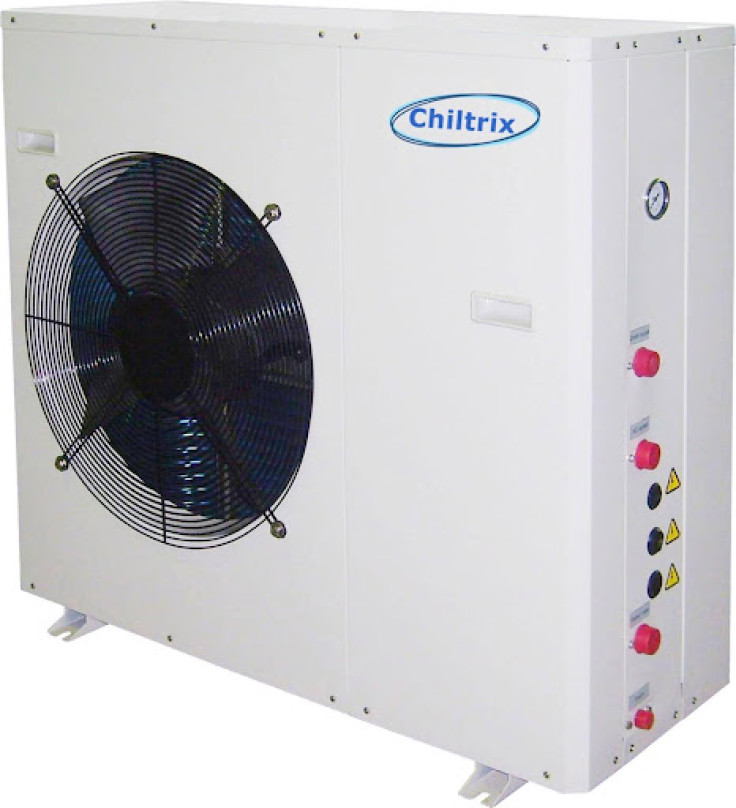Chiltrix Brings The Latest In Energy-Efficient Heating And Cooling With Top-Of-The-Line Air-To-Water Heat Pumps

For decades, the U.S. has enjoyed low energy prices, allowing the average American to consume huge amounts of energy without burning a hole in their pocket. However, in recent years, this has changed, and the rising cost of energy has made people give a second thought to their consumption. Furthermore, an increased awareness of environmental impacts has resulted in efforts to increase the energy efficiency of heating, ventilation and air conditioning (HVAC) systems. In a sense, the U.S. is looking to catch up with other global regions such as Europe.
Chiltrix, an affiliate of Hotspot Energy, is the leading manufacturer of air-to-water heat pumps (ATWHPs) in the U.S. ATWHPs are an innovative, next-generation solution to the heating and cooling needs of many commercial and residential buildings.
According to John Williams, founder of Chiltrix, most people in the U.S. are not yet familiar with an air-to-water heat pump, but, at its simplest, it functions similarly to a normal heat pump by transferring heat from one side to another, providing cooling in hot weather and heating in cold weather. Aside from higher efficiency, a noticeable difference is that the indoor equipment is connected to outdoor equipment by insulated water lines rather than high-pressure refrigerant lines. Like a normal heat pump, instead of burning fossil fuels, an air-to-water heat pump is powered by electricity, which is increasingly being generated using renewable sources, rather than burning fossil fuels such as natural gas or coal.
In a regular heat pump system, the outdoor unit is connected by high-pressure refrigerant lines to an indoor system commonly referred to as an air handler. This air handler sits in a duct system that distributes heated or cooled air. The refrigerant is piped inside the building, which creates a risk of a leak introducing harmful chemicals indoors. Some high-efficiency refrigerants — such as R290, another name for propane — are extremely toxic and flammable.
Williams says ATWHPs solve this issue by instead piping water within the building, and keeping all of the refrigerant in the outdoor unit. This utilizes water's properties as a better conductor of heat than air, or a refrigerant, as well as allowing the system to double as a domestic hot water source, resulting in further energy savings.
ATWHPs also enable the use of radiant heating and cooling within the building. Radiant heating and cooling is a much more energy-efficient way of climate control than conventional forced-air systems by eliminating duct losses. Forced-air systems also kick up a lot of dust and other allergens, causing reactions in some individuals who breathe them in. Thus, radiant heating and cooling also contribute to better indoor air quality. Of course, many air-to-water heat pump users use air handlers and/or ductless room fan-coil units, with or without radiant.
"Radiant heating and cooling technology presents a vast improvement over forced-air or room unit-type HVAC systems," says Williams. "Cooling, heating, comfort, air quality, and energy efficiency are all better with radiant compared to any other system. From what we've seen, more than half of our customers use our ATWHPs for radiant heating, as well as for heating water for their taps and showers. Also, most customers take advantage of its high-efficiency cooling capabilities, with some using ducted, ductless, or in some cases, using their radiant systems for cooling."
Williams adds that one thing that sets Chiltrix apart from its competitors is its never-ending pursuit of R&D and product excellence. With around 60% of its team composed of engineers, Chiltrix's goal each time it designs a product is to build the most rugged, reliable, and efficient product on the market, without cutting any corners. It uses components sourced from only the best manufacturers in the world, resulting in higher build quality than competing products.
"We have patent-protected technology that allows our backup heating system to be more efficient than anyone else's," Williams says. "We also have some dynamic humidity control functions that allow the system to react to indoor humidity and adjust accordingly. For example, when indoor dehumidification is unnecessary, the system can shift to a more efficient water temperature. But it can also sense if indoor humidity is rising and shift back to a temperature that allows strong dehumidification when needed. Our mantra is that conservation should not result in deprivation. The American consumer is a very demanding consumer – they know what they want, and they want it right now. So, we try to build with the American consumer in mind. If we can satisfy the American consumer, then we can satisfy any customer worldwide."
© Copyright IBTimes 2024. All rights reserved.











